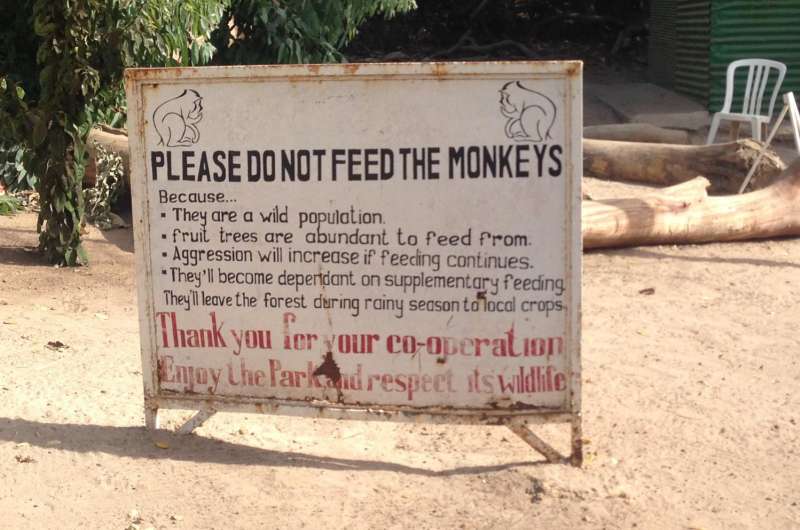Green monkeys acquired Staphylococcus aureus from humans

Many deadly diseases that afflict humans were originally acquired through contact with animals. New research published in ASM's Applied and Environmental Microbiology shows that pathogens can also jump the species barrier to move from humans to animals. The study, that will publish July 29, shows that green monkeys in The Gambia acquired Staphylococcus aureus from humans.
In the study, experts isolated strains of S. aureus from the noses of healthy monkeys in The Gambia and compared the monkey strains with strains isolated from humans in similar locations. "We used a technique known as high-throughput sequencing to gain an exquisitely detailed view of the relationships between the various strains," said study co-author Mark Pallen, MD, Ph.D., Professor of Microbial Genomics, Warwick Medical School, the University of Warwick, Coventry, UK. "The results showed that monkeys had acquired S. aureus strains from humans on multiple occasions," he added.
Most of the S. aureus found in monkeys were part of a clade, a group with common ancestors, which appeared to have resulted from a human-to-monkey transmission event that occurred 2,700 years ago.
Two of the most recent human-to-monkey transmission events appear to have taken place around three decades ago, and roughly seven years ago, respectively. These events appear to be the result of human encroachment into the monkeys' natural habitat, and probably resulted from transfer of human bacteria from hands to food that was then fed to monkeys, according to the report.
"Although wild, these monkeys are very acclimated to humans, who often feed them peanuts," explained coauthor Martin Antonio, PhD, Unit Molecular Biologist & Principal Investigator, Vaccines and Immunity Theme, Medical Research Council Unit, Banjul, who led the work in The Gambia.
The investigators found no evidence of transmission of S. aureus from monkeys to humans.
Interestingly, strains that jump from humans to monkeys lose genes that are known to confer adaptation to the human host, said Edward Feil, PhD, Professor of Microbial Evolution, Department of Biology and Biochemistry, University of Bath, UK, who led the analysis of the strains.
Humans acquired many of the diseases that have been among the deadliest, historically, from the livestock domesticated in the early years of civilization. In the last few generations, the combination of increasing human encroachment on wild ecosystems, and increasing human travel has led to acquisition and spread of diseases ranging from HIV to Lyme disease. "As humans encroach ever more steadily into natural ecosystems, the risk increases that pathogens will be transmitted from humans to animals, or vice versa," Pallen concluded.
More information: Madikay Senghore et al, Whole-genome sequencing reveals transmission offrom humans to green monkeys in The Gambia, Applied and Environmental Microbiology (2016). DOI: 10.1128/AEM.01496-16
Journal information: Applied and Environmental Microbiology
Provided by American Society for Microbiology



















